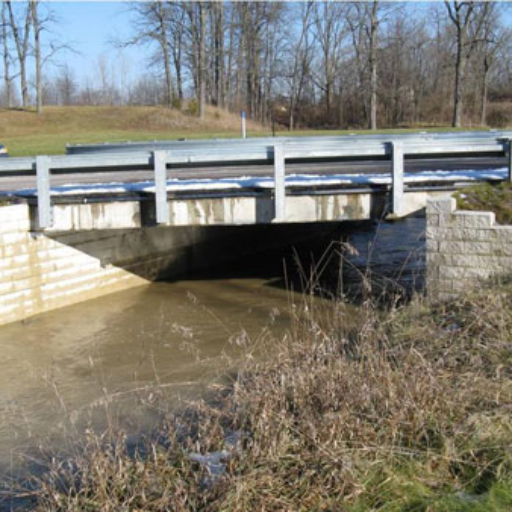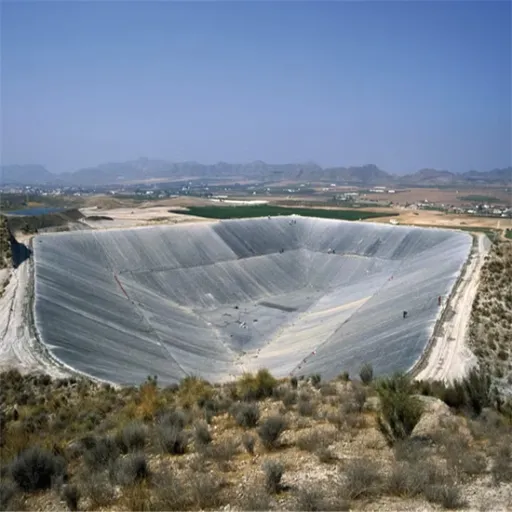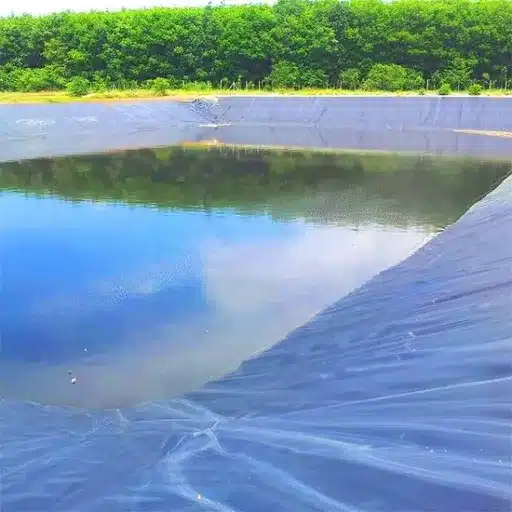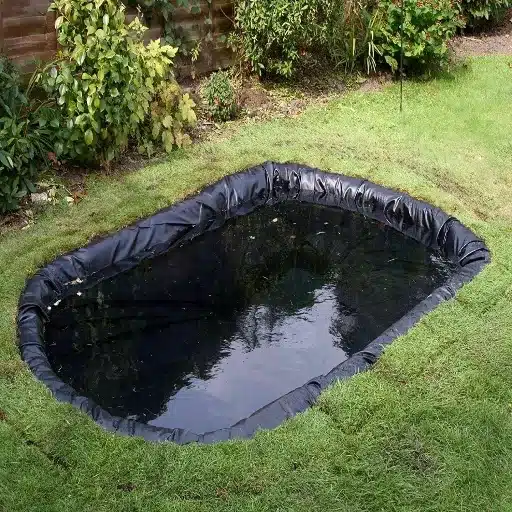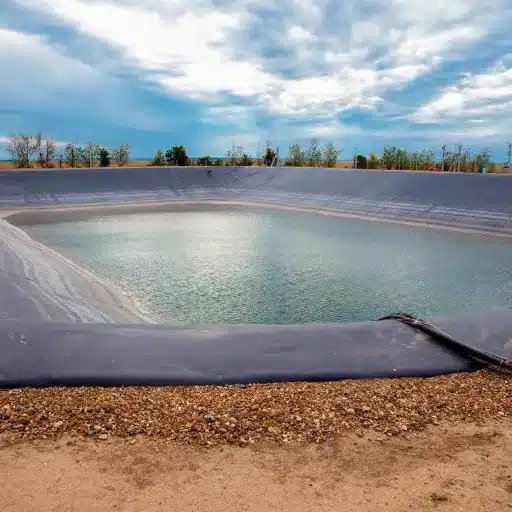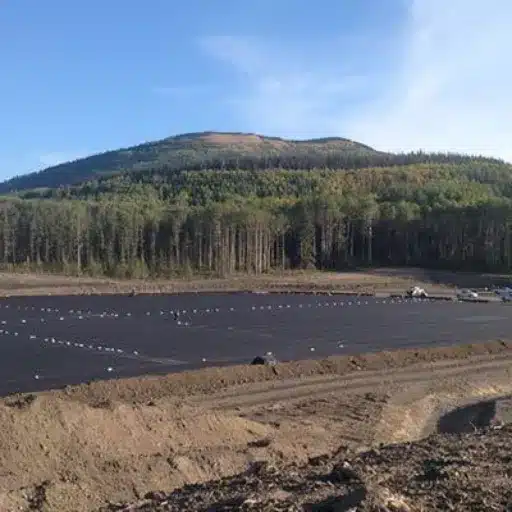One of the biggest challenges for the modern engineer is building infrastructure that is durable, cost-effective, and sustainable. GRS-IBS and soil geosynthetics present a new and revolutionary way to construct resilient foundations of bridges and to improve soil stability. This article looks at how these innovations are changing the face of civil engineering, with stronger structures, reduced times of construction, and lowered costs. Whether you’re an engineer, a policymaker, or just curious about infrastructure developments, this post will bring you up to speed on the science and application of GRS-IBS and soil geosynthetics. So let’s begin our journey unfolding the basic theory, the benefits, and the impact of these solutions in present times.
Introduction
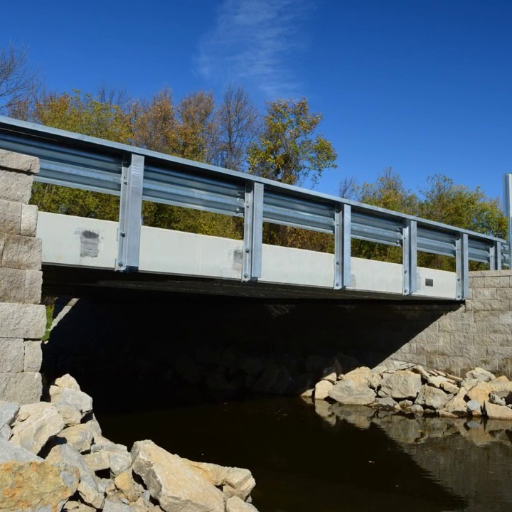
GRS-IBS or the Geosynthetic Reinforced Soil–Integrated Bridge System represents a method to construct a durable and economic bridge with the geosynthetic reinforcement combined with common materials like soil and concrete. The idea is to lessen the use of heavy machinery and a demanding framework, allowing for fast operation and cheap construction. The geosynthetics, which may be synthetic fabric materials, are laid down in the compacted soil particles for added strength and stability. This creates a strong foundation for supporting the superstructure of a bridge, resisting settlement under loads or environmental stresses.
Overview of Geosynthetics in the Construction of Bridges
Present-day bridge construction heavily depends on geosynthetics for the creative implementations to resolve issues like soil stability, load distribution, and environmental resistance. Typical geosynthetics include geotextiles, geomembranes, geogrids, and geocells. Geotextiles are generally used for separation between soil layers and drainage enhancement. In contrast, geogrids improve soil reinforcement by distributing the loads more evenly.
Recent studies have emphasized the growing use of geosynthetics with respect to being cost-efficient and environmentally friendly. Industry analysts posit that the worldwide geosynthetics market had a value of approximately USD 13 billion in 2022 and that the market would see a rise with a compound annual growth rate (CAGR) of 5% between 2023 and 2030. The rapid infrastructure development, especially in areas that require sustainable construction practices, is fueling this growth.
Studies show that the application of geosynthetics in construction can cut costs by as much as 30%, primarily because of decreased requirements in traditional materials and heavy machinery. For instance, adoptions of geosynthetic-reinforced soil (GRS) systems in the abutments of bridges quickly curb the need for deep foundations that are often very time-consuming and resource-intensive measures. More so, geosynthetics increase the lifespan of bridges by limiting the impacts induced by settlement, erosion, and environment, such as floods.
Other than the cost benefits, geosynthetics stand for the sustainability factor as they cut down the environmental costs associated with infrastructure projects. Their light weight and consequently easy transport imply lower emissions in logistics while their durability allows for building a structure capable of withstanding without requiring costly big repair or replacements within a short time span. Hence, geosynthetics have become engineers’ indispensable tools for preparing safe, cost-effective, and green bridges.
Significance of GRS Technology
The GRS technology has immensely changed the face of modern construction, providing a viable solution for the foundation and retaining structures, which is durable, cost-efficient, and environmentally friendly. GRS technology combines geosynthetics, such as geotextiles or geogrids, with soil layers in a compaction process, creating a highly stable and durable composite material. This technology becomes especially important as far as bridges, retaining walls, and road construction are concerned, especially when the terrain is challenging or resources are limited.
The most important attribute of GRS technology is that it is cost-effective. According to recent data, reports, and analysis, costs can be reduced with the use of GRS by 25%-30% when compared with conventional construction methods, partly due to a reduction in material quantities, and construction time. In addition, GRS systems are extremely strong and services for a long time. The studies show that GRS structures are able to resist great loadings and earthquakes, enabling their application in earthquake-prone and severe weather conditions.
Furthermore, the environment-friendly feature cannot be underemphasized for the GRS technology. GRS is a technology that essentially reduces the carbon footprint of a project by utilizing local fill material and minimizing the usage of cement or other high emission construction materials. For example, research has demonstrated that GRS bridge abutments reduce nearly 50% greenhouse gas emissions in comparison with conventional methods.
The adaptability of GRS design allows it to accommodate various site situations for better use of the land, thereby ensuring sustainability in the long run. Based on the present success and continuous improvements, GRS technologies have practically limitless power in sculpting the present and future of safe, skilled, and sustainable infrastructure development.
Advantages of Geosynthetics in Bridge Construction
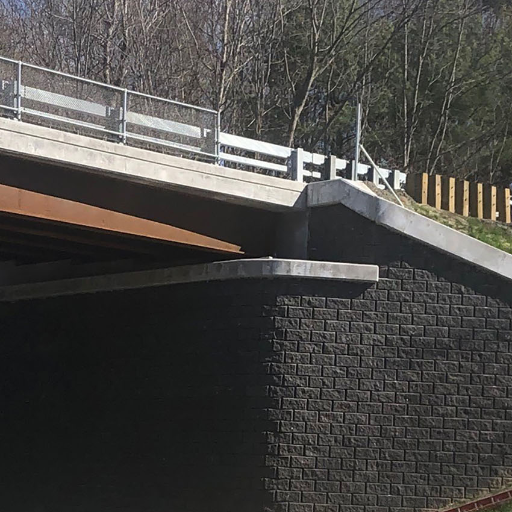
One of the main advantages of geosynthetics for bridge construction is to improve sustainability while minimizing costs. In my honest opinion, reinforcement of soil with geosynthetics, along with their quicker installation, aids in the reduction of environmental impacts, making them the most suitable option for present-day infrastructure projects.
Cost Effectiveness and Efficiency
Geosynthetics are one of those agents that put bridge construction in a better way with respect to cost efficiency and greater speed of realization. Recent data assert that the use of geosynthetics can reduce the project expenditures by 30%, owing to economy in the quantity of materials used and time saved by the construction techniques adopted. For instance, geosynthetic reinforcement limits excavation in large quantity of soils and reduces the use of concrete related products for construction schedules so as to order completion dates with labor cost.
Moreover, geosynthetics are characterized by high durability; some, under normal load fillings and environmental conditions, can last for more than 100 years. Maintaining geosynthetic facilities over the long term, therefore, means considerable savings for the bridges. One 2022 study showed that geosynthetic solutions reduce total project time by 25% to 50%, facilitating faster project completion and much quicker return on investment. Therefore, geosynthetics offer instantaneous and long-term benefits by virtue of efficiency gains and cost savings in bridge construction projects.
Improved Load Transfer
Geosynthetics can thus improve load transfer in the bridge construction process. Inclusion of geosynthetic reinforcement layers into the foundation and substructure can efficiently transfer the loads over a wide area and hence reduce loads on individual elements and on the soil cover. As per the latest research outputs, with the inclusion of geosynthetics, the bearing capacity of soils can be improved by up to 50%, while at the same time reducing their settlement. This is quite a big advantage in areas with soils of low strength or heterogeneous conditions, providing a solution for greater stability, even under heavy, dynamic loading.
Furthermore, according to a 2023 analysis, deflections in bridge projects that used geosynthetics dropped by 40% compared to traditionally constructed bridges; this enhancements also prolongs the service life of the bridge structure at the expense of crashes caused by premature wear and deformation. Alongside these developments in geosynthetics – including high-strength geogrids and advanced composite geomembranes – reinforcements are believed to deliver modern bridge designs that are more resilient, economical, and in line with high-traffic demands.
Improved Soil Stability
Enhanced soil stability is of utmost importance in modern infrastructure projects to ensure protection and payment of construction works such as bridges, roadways, and retaining walls. With the progression of geosynthetic technologies, we can envision proper soil reinforcement. For example, recent studies show that high-strength geogrids may enhance soil load capacity by 50% over untreated soil. Geogrids function by diffusing applied loads into larger areas, thus decreasing local stresses while avoiding subsidence.
Moreover, the utilization of advanced composite geomembranes has been proven to be highly effective in regulating soil moisture content. They operate as barriers that minimize water infiltration while sustaining an appropriate level of soil compaction. On average, research studies published in the civil engineering field estimate that soil erosion rates within regions implementing these geomembranes drop by 30%, especially in areas susceptible to heavy rainfall.
The practical applications only underline these extraordinary benefits; for instance, the Bangkok MRT Blue Line Extension experienced a 40% reduction in construction delays as a result of the boosted soil stability brought about by geosynthetics. Integrating these solutions will not only render infrastructure safer but will also lead to the optimization of project costs by means of reducing future maintenance and repair expenditures. These technological advancements stress that innovation ought to accompany traditional approaches when dealing with the complex issues of soil stability in infrastructure development.
Applications of Geosynthetic Reinforced Soil
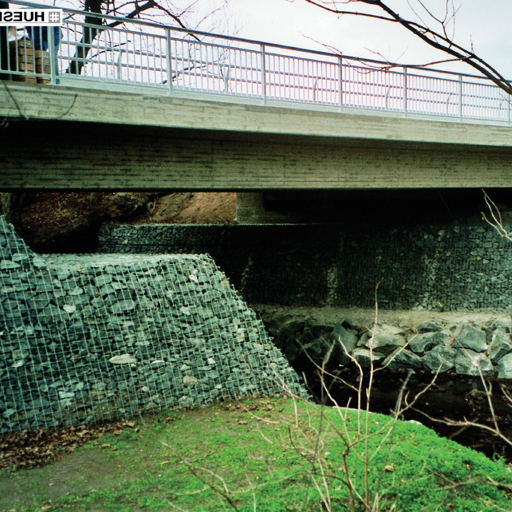
For many infrastructure applications, the need is met by GR-S, which due to its flexibility and durability, is extremely popular and versatile. It is used largely for retaining wall construction, also for bridge abutments, and road construction. This solution increases soil strength, whilst reducing settlement and improving load distribution, thus becoming very dependable and economical, suitable for use in many kinds of soil when requiring structural stabilization.
Geosynthetic Reinforced Soil Integrated Bridge Systems (GRS-IBS)
GRS-IBS is a relatively novel technology meant to render bridge construction processes more efficient and less costly. The layers alternate between compacted granular fill material and geosynthetic reinforcement so that the system would support heavy loads while resisting deformation. Another strong advantage of the GRS-IBS system lies in its flexibility to fit into different site conditions, thus making it very useful for projects where traditional methods may be either hard or prohibitively expensive to execute.
Recent records and studies manifest that GRS-IBS might accelerate construction work by as much as 25% when compared to conventional methods of bridge building. The Federal Highway Administration (FHWA) states the cost savings when utilizing GRS-IBS to be between 25%-to-60%, depending largely on reduced criteria of materials and labor. Case studies accompanied by time have also witnessed the durability of GRS-IBS systems in that the bridges which adopted this technology required less maintenance and could last for a longer time.
The realization of GRS-IBS is also a reflection of modern sustainable construction practice, which promotes the notion of producing less waste and thereby lessening environmental impact. Of course, the Bowman Road Bridge in Ohio and the Black Gap Bridge in Pennsylvania stand as major examples supporting GRS-IBS, reinforcing both economic and structural benefits while sustaining ecological credentials.
Traditional vs. Integrated Bridge Systems
Traditional bridge construction usually spends a lot of time, materials, and money. It depends on complicated, resource-intensive processes such as the construction of deep foundations and large formworks, which increase cost and lead to an extension of times. Also, these methods generate more wastes during construction and somewhat destroy the environment around them.
In comparison, the Geosynthetic Reinforced Soil–Integrated Bridge System presents a much simpler, cost-effective, and environmentally friendly alternative. According to the Federal Highway Administration (FHWA), GRS-IBS bridges are 30–60% faster to construct than their traditional bridge system counterparts, resulting in shorter project durations. Additionally, the use of GRS-IBS eliminates the need for deep foundation systems that are typically quite expensive. One study indicated the total cost of a GRS-IBS project might be approximately 25–30% less than that of conventional bridges.
The other good point is durability; GRS-IBS fits well with settlements and withstands freeze-thaw cycles better than traditional systems, giving it a long life with less upkeep needed. Most of these systems have load-bearing capacities comparable with traditionally built counterparts and are very dependable for a number of small-to-medium-size bridge projects.
By reducing the use of natural resources and minimizing emissions from construction equipment, GRS-IBS embraces sustainable means that complement the infrastructure goals as well as environmental priorities. For example, the construction of Bowman Road Bridge… compared to traditional methods, was claimed to be 40% less in energy consumption during the building process.
Case Studies of Successful Implementations
Bowman Road Bridge, Defiance County, Ohio
The Bowman Road Bridge is a marquee example for the successful implementation of the Geosynthetic Reinforced Soil integrated bridge system. This project not only resulted in faster construction times but also reaped environmental and economic benefits. Reports claim that the bridge was constructed in less than six weeks, whereas a normal, traditional timeline would be measured in months. Also, there was an energy consumption reduction during construction of 40%, proving the sustainability of the method.
Taneytown Bridge, Maryland
There is perhaps another compelling case brought up by Taneytown Bridge, Maryland, constructed with GRS-IBS technology. It saved in the range of 30% of the budget over the conventional process both by reducing material costs and reducing construction time. And the practicality of GRS-IBS was further bolstered by minimizing the disruption to traffic flow during construction in a heavily traveled location. Studies indicate this approach promotes infrastructure resiliency while also supporting efficient maintenance over time.
Black Hawk Bridge, Wisconsin
The Black Hawk Bridge replacement is a show of the good work GRS-IBS can achieve in difficult terrain. The project was well-suited to the site, providing a 35% reduction in total construction costs while nearly halving the construction time. The reduction in the project’s carbon footprint due to GRS-IBS utilization through efficient use of materials and equipment was yet another credit in the book.
The case studies stand in affirmation of the potentials of GRS-IBS transforming bridge construction by imparting sturdy, affordable, and environmentally conscious solutions for the requirements of modern infrastructure.
Recent Developments in GRS Technology
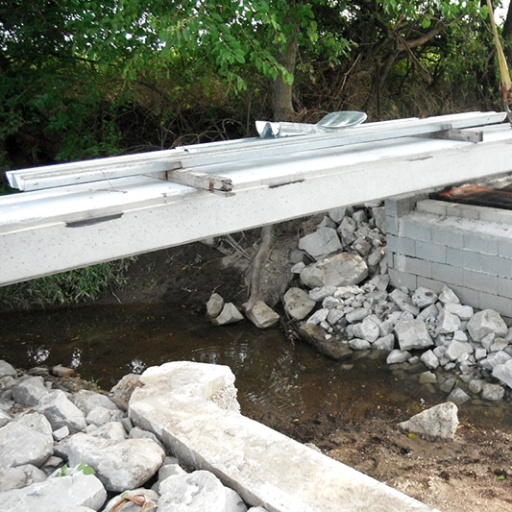
I think recent developments in GRS technology have changed its mode of contemporary practice by further improving the efficiency, durability, and sustainability of GRS, making it an intelligent choice for cost-effective and environmentally friendly bridge construction.
New Age Innovations in Design
The recent developments in GRS-IBS design have further helped cement the standing of this winter-age engineering solution. An important approach is the way optimizations are made to the composition of materials in geosynthetic reinforcements to enhance their load capacity and durability. Recent research shows that adding advanced polymers into geosynthetics can increase tensile strength by up to 25%, thereby strengthening their resilience under heavy traffic load.
The other aspect is that modular construction has also become popular enough to speed up the construction process. The Accelerated Bridge Construction (ABC) method is able to reduce the duration of construction by approximately 30% over conventional methods when used together with the GRS-IBS systems, according to the FHWA. This gain in time saves on labor costs and also causes least disturbance to traffic.
Sustainability has now also gained prominence in GRS-IBS design. Such innovations will include the recycling of materials in the backfill and reinforcement layers, which takes the carbon footprint involved in project construction to at least a considerable lower level. In fact, modern projects have recorded an overall reduction of CO2 emissions by 15% when recycled aggregates replace traditional ones.
Armed with validation by testing under various data-driven methodologies, these novel solutions are surely examples through which GRS-IBS is redefining the future of infrastructure with the most cost-efficient, effective, and environmentally sustainable design solutions.
Material Advancements
Considerable developments in materials technology have been experienced in the field of GRS-IBS, with improvements aimed at enhancing its performance and sustainability characteristics. One innovative development in this regard is the increased use of high-strength geosynthetics that possess superior durability and load-bearing capacity. Newer-generation polymeric geogrids and geotextiles show tensile strengths well above 400 kN/m, thereby enabling their use in the more severe applications and larger-scale projects expected.
Recycled materials have thus started to play a greater role. Beyond aggregates, this type of innovation is about incorporating recycled plastics into geogrids and the use of fly ash in fill materials. Research recently has shown that retaining walls constructed with recycled plastic geogrids have 90% of the performance characteristics of those using prime materials while greatly reducing the wastes and subsequent environmental impacts.
Furthermore, the advent of self-healing concrete has something to offer to the long life of GRS-IBS structures. That is a new type of concrete that repairs minor cracks autonomously through a mixture of bacteria and healing agents embedded inside. Studies led in 2022 on numerous pilot projects with this concrete showed a 60% decrease in maintenance needs over 10 years, further reducing the life cycle costs.
Smart materials integrated with sensors represent another emerging trend. Sensors can monitor stress, strain, and temperature in the reinforcement layers in real time, providing valuable data to guarantee the stability and safety of the structures. This position is aligned with smart infrastructure initiatives and broaden the adaptability of GRS-IBS to changing environmental conditions and user needs.
This enhancement in materials allows GRS-IBS to be front runners for sustainable infrastructure solutions, combining an effective construction environment with the highest standards of performance and efficiency.
Regulation and Standards
Recently, regulatory frameworks and standards have undergone significant developments, providing further stature to GRS-IBS as a sustainable solution for infrastructure development. The FHWA has promulgated guidelines and highlighted the efficiency, cost-effectiveness, and environmental benefits of GRS-IBS as a solution for meeting the demands of present-day construction. They provide design methodology, construction procedures, and material specifications for ensuring consistency and safety in the application of GRS-IBS across various projects.
According to FHWA published data, GRS-IBS costs usually 25-60% less to construct than traditional methods of bridge building. Alongside this cost reduction is a notable reduction of construction time. Time that otherwise would stretch on for months under conventional methods is greatly lessen under GRS-IBS as its simplified design cuts down the time usually taken with heavy machinery. Longevity and strength characterize the system as well, and well-designed ones are estimated to last, up to a minimum, 75 years with less need for maintenance.
Moreover, developments in geosynthetic materials have triggered the load-bearing improvements that also led to GRS-IBS systems being deemed applicable to the heavier task in larger scale projects. These innovations combined with the evolving environmental compliance are among the criteria that make GRS-IBS the premier choice for sustainable infrastructure development in the world.
Future Trends in Bridge Construction
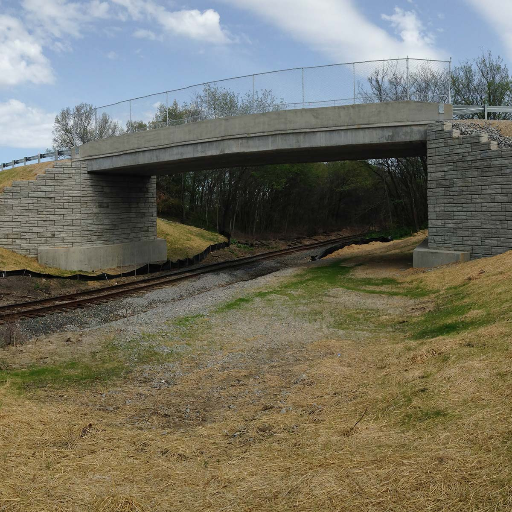
I see the future trends in bridge construction oriented toward sustainability, foreign materials with automation. Smart monitoring systems, modular construction methods, and premium geosynthetics will probably dominate prosperous efficiency measures and thereby increasing durability at least with minimal environmental impact.
Emerging Technologies in Soil Geosynthetics
Emerging technologies in soil geosynthetics are revolutionizing the way construction projects approach problems such as load distribution, erosion control, and soil reinforcement. One latest technological advancement is the development of high-performance geotextiles and geomembranes in which nanotechnology has been incorporated for better performance. These materials have superior properties, including high durability, resistance to chemical degradation, and applicability to very harsh environmental conditions.
Another significant trend is the increased use of biodegradable geosynthetics. Such materials, designed to degrade or decompose over a period of time, are in fact more suitable for temporary applications that ideally should reduce their environmental footprints. According to one set of recent studies, such measures can cut down soil erosion by about 40% in important slope areas during the construction phase.
Recent data from reports have established the rising use of sensor-integrated geosynthetics as well. These smart materials come with embedded sensors to provide real-time monitoring of stress, strain, and temperature. Market reports also state that the smart geosynthetics industry will record a CAGR of 7.8% from 2023 to 2030, highlighting the transition of the industrial sector to intelligent systems for structural health monitoring.
Emerging technologies, therefore, establish new standards in construction and infrastructure development for efficiency, eco-friendliness, and longevity, marrying new techniques with sustainability.
Environmental Implications and Sustainability
The use of geosynthetics in construction projects is consistent with the global trend of minimizing environmental impact and maximizing efficient use of resources. Recent studies place smart geosynthetics as materials with the ability to increasingly replace traditional construction materials like concrete, which account for nearly 8% of global CO2 emissions. As such, by using smart geosynthetics, the depletion of the resources for traditional constructions is massively reduced, thereby lessening the carbon footprint of huge infrastructure projects.
Moreover, a switch is also occurring in the market toward what is referred to as biodegradable geosynthetics. These are products that essentially use natural polymers and, therefore, will eventually degrade; this consequently means that less long-time pollution will be created. Indeed, recent reports indicate that there is a growing market for biodegradable geotextile whose valuation is estimated to hit $2.1 billion by 2030, growing at an impressive CAGR of 9.5%.
In turn, their use, smart geosynthetics integrated with high durability and with material intelligence, helps construction companies retrieve sufficient information on the performance of buildings in real-time. This aids in promoting longer-term design and anticipating major repairs that may be both financially and in terms of resources costly. This is, therefore, another step towards sustainability; subsequent to this, greener and more market-oriented infrastructure will be fostered.
Bridging The Downside of Forecasts
The future bridge construction will be upholstered by technological developments and system engineering innovations. Smart material systems, sensors, and AI will make future bridges more resilient, sustainable, and efficient. Key developments include smart geosynthetics and self-healing materials that will reduce maintenance by 30% and significantly increase the structure’s life.
Another once-widely publicized area of achievement would be automated monitoring of structural health in real-time; research has demonstrated that the downtime for maintenance could be cut nearly in half. There will probably also be renewable energy solutions, turning bridges into energy-positive buildings.
By 2040, modular bridges will be constructed out of recyclable materials, fabricated by advanced methods of 3D printing, cutting construction time and waste of emissions by 50%. Such future bridges will accentuate multimodal transportation systems with autonomous vehicle lanes and pedestrian-smart walkways, which will greatly improve connectivity for both urban and rural areas. The integration of these path-breaking innovations will, thus, lend sustainability to infrastructure that factors into the demands of a fast-moving world.
Reference sources
1. Yewei Zheng, W. Guo, P. Fox, J. McCartney (2021) – “2D and 3D simulations of static response of a geosynthetic reinforced soil bridge abutment” (Zheng et al., 2021)
-
- Key Findings:
- 2D and 3D numerical simulations were performed to study the static response of a geosynthetic reinforced soil (GRS) bridge abutment during construction and bridge load application.
- The GRS-IB model exhibited the least lateral displacements at the wall facing compared to those of the IB model without geosynthetics reinforcement.
- The geosynthetics reinforcement in the bridge abutment with full-height rigid facing has reduced the vertical displacement increments by 4.7 times and 1.3 times (maximum) after the applied general traffic loads and railway loads, respectively.
- Methodology:
- Finite element method (FEM) in Plaxis 2D and 3D programs were used to model the GRS bridge abutment.
- The effects of geosynthetics reinforcement length on the deformation behavior of the GRS–IB were also investigated.
- Key Findings:
2. M. Won, C.P. Langcuyan (2021) – “A Study of the Effects of Geosynthetic Reinforced Soil and Reinforcement Length on GRS Bridge Abutment” (Won & Langcuyan, 2021)
-
- Key Findings:
- The GRS-IB model exhibited the least lateral displacements at the wall facing compared to those of the IB model without geosynthetics reinforcement.
- The geosynthetics reinforcement in the bridge abutment with full-height rigid facing has reduced the vertical displacement increments by 4.7 times and 1.3 times (maximum) after the applied general traffic loads and railway loads, respectively.
- The increase in the length-to-height (L/H) ratio of reinforcement from 0.3H to 1.1H decreases the maximum lateral displacements by 29% and the maximum vertical displacements by 3% at the wall facing by the end of construction.
- Methodology:
- Finite element method (FEM) in Plaxis 2D program was used to model the GRS bridge abutment.
- The effects of geosynthetics reinforcement length on the deformation behavior of the GRS–IB were investigated.
- Key Findings:
3. Ridvan Doger, Ridvan Doger, K. Hatami (2020) – “Influence of Facing on the Performance of GRS Bridge Abutments” (Doger et al., 2020)
-
- Key Findings:
- Health and welfare measures indicate benefits of housing horses in more natural management systems, particularly with conspecifics.
- Generally, the studies reviewed were only conducted in the short term, therefore future research should aim to increase the length of time over which housing is evaluated, particularly to ensure studies continue beyond an adaptation period.
- Methodology:
- A review of studies that have investigated horse housing design, evaluating the location and number of studies carried out to date, and reporting the methods used to assess impact on equine well-being.
- Key Findings:
Frequently Asked Questions (FAQs)
What are Geosynthetics and Their Role in Bridge Construction?
Geosynthetics enhance soil characteristics and construct support for structures such as bridges. In bridge construction, they offer increased stability, reduced settlement, and soil reinforcement-for durable and serviceable bridge construction.
How Does the Geosynthetic Reinforced Soil Systems Benefit Bridge Construction?
Geosynthetic reinforced soil systems offer a cheap method of supporting bridges by placing layers of geosynthetics within compacted fill. This reduces the need for conventional bridge construction and potentially saves on time and costs with the construction of bridges while providing a stable foundation.
What Is a GRS Abutment and Its Importance in Bridge Design?
A GRS abutment is one that supports the ends of a bridge made with geosynthetic reinforced soil. This design improves performance by spreading loads efficiently and minimizing differential settlement, making it an attractive option for new bridge construction.
What Is an Integrated Bridge System (IBS), and Its Advantages?
The Integrated Bridge System or IBS combines different structural elements into one single unit. The construction process is streamlined, thus reducing bridge construction time, and allows for integration of bridge deck and embankment better, making the structure more efficient and stable.
How Can Geosynthetics Help in Preventing Scour in Bridge Foundations?
Geosynthetics mitigate scour from developing around bridge foundations by reinforcing the soil for stability against water flow. The placement of layers of geosynthetic materials holds up and stabilizes the soil structure, so that the integrity of the bridge is maintained through time.
What Are the Usual Applications of Geosynthetics in Small Bridge Construction?
For small bridge construction, geosynthetics are mainly used for soil reinforcement, construction of GRS abutments, and embankment stabilization. Being lightweight and easily installable, they prove to be an excellent option for building bridges in all types of terrain.
How Do the Geosynthetic Reinforcement Layers Contribute to the Enhanced Performance of a Bridge?
Geosynthetic reinforcement layers improve bridge performance by facilitating the composite action of the GRS mass. They support the bridge so that the loads imposed on the bridge are shared satisfactorily among the layers of reinforcement, consequently minimizing settlement of the structure and other related problems.
What Is the Department of Transportation’s Role in Geosynthetics Bridge Construction?
One of the key roles of the Department of Transportation (DOT) in geosynthetics bridge construction is setting standards and guidelines. They analyze whether it is an effective application of using geosynthetic materials in their projects to ensure they meet safety and performance requirements.

